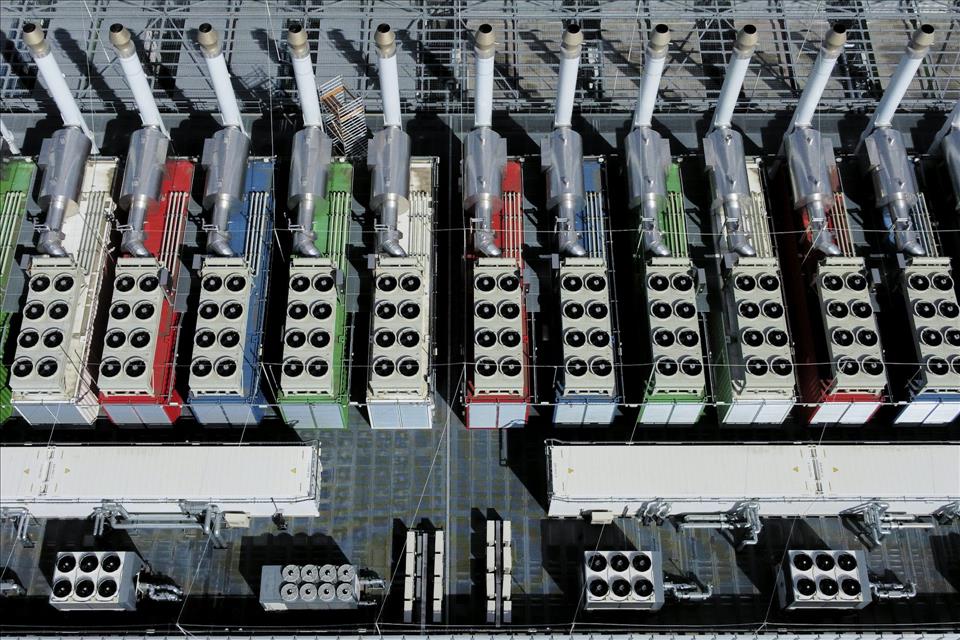AI's Ballooning Energy Consumption Puts Spotlight On Data Center Efficiency
AI models are getting larger and more complex. Today's most advanced systems have billions of parameters, the numerical values derived from training data, and run across thousands of computer chips. To keep up, companies have responded by adding more hardware, more chips, more memory and more powerful networks. This brute force approach has helped AI make big leaps, but it's also created a new challenge: Data centers are becoming energy-hungry giants.
Some tech companies are responding by looking to power data centers on their own with fossil fuel and nuclear power plants . AI energy demand has also spurred efforts to make more efficient computer chips .
I'm a computer engineer and a professor at Georgia Tech who specializes in high-performance computing. I see another path to curbing AI's energy appetite: Make data centers more resource aware and efficient.
Energy and heatModern AI data centers can use as much electricity as a small city . And it's not just the computing that eats up power. Memory and cooling systems are major contributors, too. As AI models grow, they need more storage and faster access to data, which generates more heat. Also, as the chips become more powerful, removing heat becomes a central challenge.
Data centers house thousands of interconnected computers. Alberto Ortega/Europa Press via Getty Images
Cooling isn't just a technical detail; it's a major part of the energy bill. Traditional cooling is done with specialized air conditioning systems that remove heat from server racks. New methods like liquid cooling are helping, but they also require careful planning and water management. Without smarter solutions, the energy requirements and costs of AI could become unsustainable.
Even with all this advanced equipment, many data centers aren't running efficiently. That's because different parts of the system don't always talk to each other. For example, scheduling software might not know that a chip is overheating or that a network connection is clogged. As a result, some servers sit idle while others struggle to keep up. This lack of coordination can lead to wasted energy and underused resources.
A smarter way forwardAddressing this challenge requires rethinking how to design and manage the systems that support AI. That means moving away from brute-force scaling and toward smarter, more specialized infrastructure.
Here are three key ideas:
Address variability in hardware. Not all chips are the same. Even within the same generation, chips vary in how fast they operate and how much heat they can tolerate, leading to heterogeneity in both performance and energy efficiency. Computer systems in data centers should recognize differences among chips in performance, heat tolerance and energy use, and adjust accordingly.
Adapt to changing conditions. AI workloads vary over time. For instance, thermal hotspots on chips can trigger the chips to slow down, fluctuating grid supply can cap the peak power that centers can draw, and bursts of data between chips can create congestion in the network that connects them. Systems should be designed to respond in real time to things like temperature, power availability and data traffic.
How data center cooling works.
Break down silos. Engineers who design chips, software and data centers should work together. When these teams collaborate, they can find new ways to save energy and improve performance. To that end, my colleagues, students and I at Georgia Tech's AI Makerspace , a high-performance AI data center, are exploring these challenges hands-on. We're working across disciplines, from hardware to software to energy systems, to build and test AI systems that are efficient, scalable and sustainable.
Scaling with intelligenceAI has the potential to transform science, medicine, education and more, but risks hitting limits on performance, energy and cost. The future of AI depends not only on better models, but also on better infrastructure.
To keep AI growing in a way that benefits society, I believe it's important to shift from scaling by force to scaling with intelligence.

Legal Disclaimer:
MENAFN provides the
information “as is” without warranty of any kind. We do not accept
any responsibility or liability for the accuracy, content, images,
videos, licenses, completeness, legality, or reliability of the information
contained in this article. If you have any complaints or copyright
issues related to this article, kindly contact the provider above.
Most popular stories
Market Research

- Origin Summit Debuts In Seoul During KBW As Flagship Gathering On IP, AI, And The Next Era Of Blockchain-Enabled Real-World Assets
- What Are The Latest Trends In The Europe Steel Market For 2025?
- United States AI Governance Market Size, Demand, Growth & Outlook 2033
- NOVA Collective Invest Showcases Intelligent Trading System7.0 Iterations Led By Brady Rodriguez
- North America Perms And Relaxants Market Size, Share And Growth Report 2025-2033
- Canada Real Estate Market Size, Share, Trends & Growth Opportunities 2033






















Comments
No comment